Guide to Exploring Paris’s Most Charming Retreat
Paris always steals my heart, but nothing beats an afternoon at the Luxembourg Gardens.
I love watching children sail those bright toy boats across the Grand Bassin. Sometimes I just sit in a quiet corner near the Medici Fountain, soaking in the real Parisian spirit.
This peaceful spot on the Left Bank manages to feel both grand and welcoming. You’ll find carefully arranged flowers, marble statues, and shady promenades.
When I wander through the French and English gardens, I get why people keep coming back.
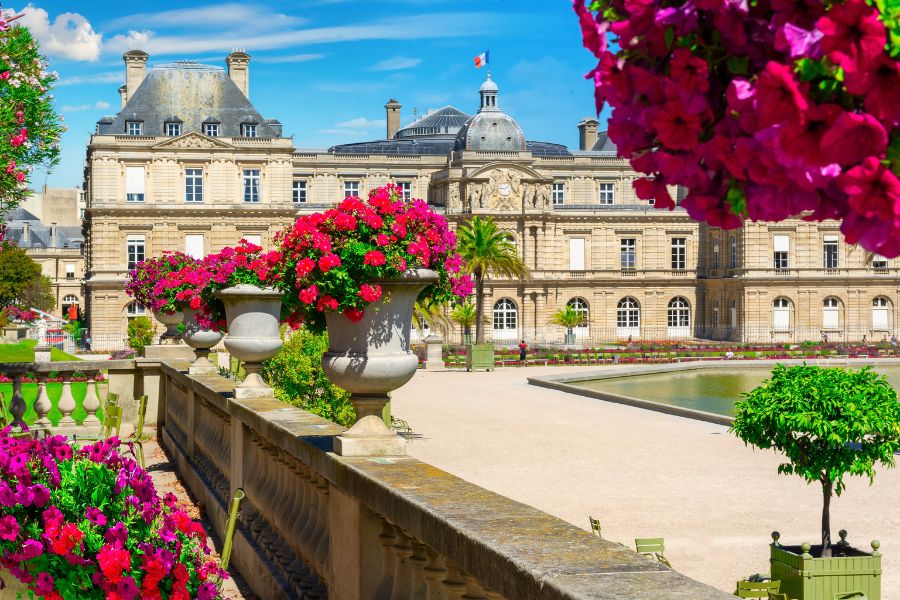
The gardens buzz with life, but never feel overwhelming. They’re just right for a midday stroll or settling in with a book.
Every visit, I find a new reason to fall for this classic Paris escape.
Savoring the Left Bank: Atmosphere & Parisian Customs
Whenever I drift through the Luxembourg Gardens and the surrounding neighborhood, I get pulled into a world with its own rhythm.
Locals and travelers stroll with purpose, pausing at fountains or under chestnut trees. The Left Bank really is about ambiance and daily rituals.
There’s a mix of traditions, a unity in routines, and contrasts in personalities and spaces.
That Quintessential Left Bank Vibe
When I step onto the Left Bank, I notice its character right away—artsy, intellectual, and a bit bohemian.
In the Luxembourg Gardens, students read by statues, grandparents help kids with toy boats, and couples linger near the Medici Fountain. Each group does their own thing, but somehow, everyone fits together.
You get these everyday scenes where even the contrasts—formal statues and playful laughter—blend into something harmonious.
Street musicians show up near shaded benches, their music mixing with the hum of conversations and laughter.
Parisians don’t hide their feelings. Sometimes it’s a quiet nod to a stranger, sometimes it’s a heated debate about art or life.
What really strikes me is how everyone, visitor or local, finds a way to belong here.

The garden isn’t just green space. It’s a patchwork of characters, each adding a layer to the Left Bank’s lively but peaceful vibe.
Café Culture and Local Traditions
I always feel at home when I slip into a café along the Left Bank.
Ordering coffee here feels almost ceremonial. You say a polite bonjour, pause for the right pastry, and know you’re welcome to linger.
Locals gather in groups, chatting over drinks, newspapers open, dogs at their feet. There’s an order to it—a sense that you’re never out of place if you want to people-watch or scribble in a notebook.
Parisians take pride in savoring the moment. Whether it’s a slow meal, a lively chat, or just watching the light shift in the afternoon, they make it an art.
Customs like the two-cheek kiss (la bise) or a warm goodbye—even for strangers—show that unity and contrast can live in routine gestures. It makes every encounter feel real.
Unity, Variety, and Contrast in Everyday Life
The Left Bank always surprises me with its mix of unity and variety.
In one corner, an artist paints city scenes. Nearby, retirees play chess, their laughter mixing with the clink of café cups.
This neighborhood is famous for its contrasts. Grand old buildings stand next to modern shops, and classic French gardens blend into neighborhoods with food from all over the world.
People of every style—scholars, artists, students—move through these spaces, each telling their own story.
What ties everything together is a shared respect for personal expression and community.
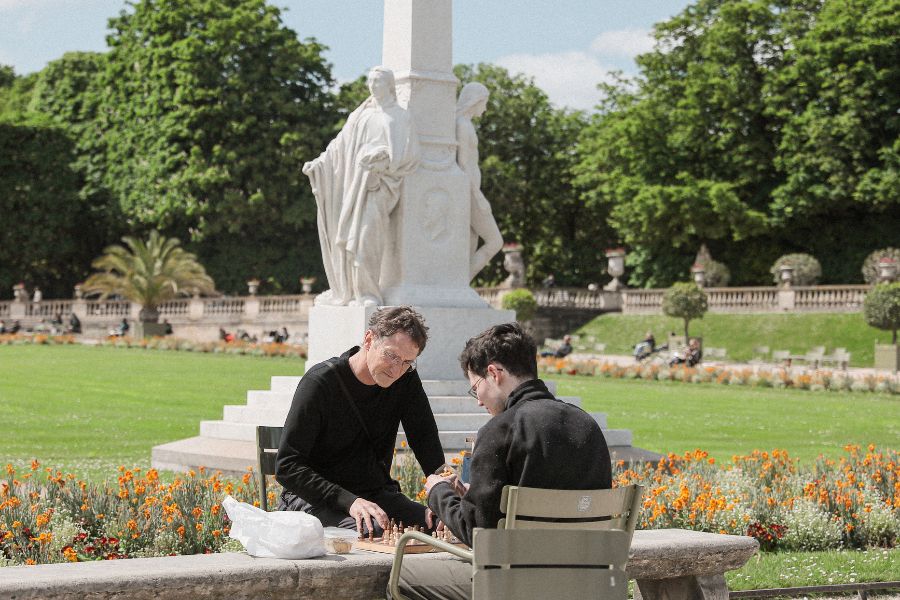
The characters I meet—shopkeepers, street performers, regulars at the cafés—all add their own flair. The Left Bank’s richness isn’t just in its history, but in its ever-changing cast.
Exploring the Heart of Luxembourg Gardens
Every time I’m in Luxembourg Gardens, I feel calm, surrounded by artistic beauty, and caught up in the thrill of finding timeless Parisian details.
Structured paths, the historic Medici Fountain, and art everywhere connect me to centuries of French heritage.
Layout, Paths, and Symmetry
As soon as I walk in, I notice the garden’s precise design. The geometric layout splits the park into French and English sections, each with its own personality.
Wide gravel avenues run between chestnut trees and rows of neatly trimmed hedges. Every stroll feels like a walk through order and artistry.
At the center, a big octagonal pond sits like a mirror, often dotted with small, wind-driven toy sailboats.
Around the pond, I see flower beds arranged just so. Benches and green metal chairs circle the water, perfect for relaxing or watching the world go by.
This balance between nature and order reflects the classic French style. Every line and turn feels intentional, guiding me straight to the park’s best features.
Medici Fountain: Poetry in Stone and Water
Down a shaded path, the Medici Fountain waits—probably the most romantic spot in the gardens.
I’m always drawn there by the gentle sound of water on old stone. Marie de’ Medici had it built in the 17th century, and it’s still a masterpiece of sculpture and reflection.
Tall plane trees arch overhead, and mossy statues watch over the rippling water.
The central scene shows the myth of Polyphemus and Galatea, carved with such expression that it still feels dramatic centuries later.
Visitors gather on curved benches, mostly quiet, lost in thought or sketching the fountain in their notebooks.
For me, the Medici Fountain is more than a photo op. It’s where I pause and feel the garden’s deeper history and artistry—where stone and water work together in harmony.
Portraits of Louis XIV and Artistic Heritage
As I walk, I stumble on statues celebrating France’s royal past, including striking portraits of Louis XIV.
These statues stand tall along leafy promenades, showing off both the king’s grandeur and the spirit of the era.
What really impresses me is the park’s dedication to art from many periods.
Over a hundred sculptures, busts, and monuments dot the grounds, each with its own story.
Some honor writers or artists; others recall classical gods or ancient myths.
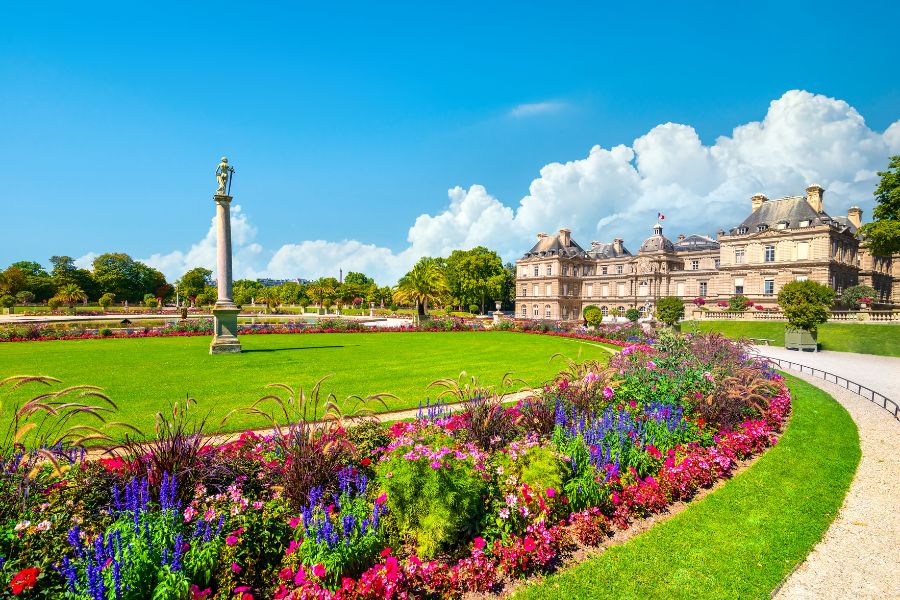
The way these works are placed—often at key points in the garden—means I discover new art every visit.
For art lovers, it’s like a living gallery outdoors. I find a new favorite almost every time, each statue framed by trees or flowers or deep green lawns.
Toy Boats, Childhood Memories, and Human Passions
Watching wooden toy boats sail across the Grand Bassin brings back a wave of nostalgia.
Kids—and honestly, plenty of adults—gather at the water’s edge, and I find small moments that capture the heart of Parisian life.
Setting Sail: Renting and Playing with Toy Boats
Renting a toy sailboat here is simple and affordable.
For just a few euros, I pick from a lineup of colorful wooden boats at a little kiosk near the pond. Each comes with a long stick for pushing it out into the water.
I join families and other visitors, drawn by laughter and excited shouts circling the pond.
Boats drift past each other, sails catching the breeze, bumping gently at the edge.
Parents snap photos, while kids dash along the rim, eager to “rescue” their boat or send it out again.
It feels like a living painting, every figure part of a calm, joyful scene.
Capturing Joy: Scenes of Human Passion and Playfulness
The pond isn’t just a place for play—it’s a little theater of human passions.
While I push out wooden boats, I see excitement, patience, and fierce pride as each child claims their boat as the fastest or prettiest.
Their little triumphs and setbacks play out in real time.
Some adults join in too. Couples walk hand in hand, sharing quiet laughs, or lean in to watch a boat they helped launch.
Parents and grandparents tell stories about their own childhood visits, connecting generations in one shared memory.
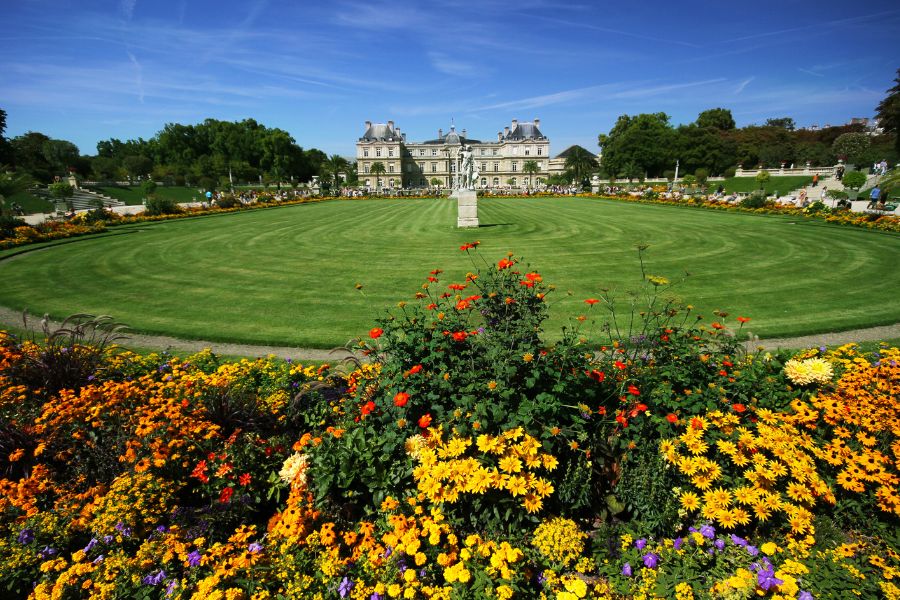
The love, rivalry, and gentle teasing create a moving tableau of everyday Paris, each person adding to the scene’s lively and touching feel.
Art, Inspiration, and the Spirit of the Enlightenment
Strolling through Luxembourg Gardens, I’m surrounded by beauty and creativity.
This spot isn’t just about green lawns and peaceful water. It’s deeply tied to artistic history and the thinkers and creators of the Enlightenment.
Fragonard, Chardin, and Artists of the Gardens
Some of my favorite 18th-century artists, like Jean-Honoré Fragonard and Jean-Baptiste-Siméon Chardin, found inspiration here.
The Luxembourg Gardens have long been a haven for painters, portraitists, and students looking to capture light and expression.
When I walk these paths, the scenes—kids by the pond, blooming flowers, statues along the walks—almost feel like living paintings.
Fragonard, known for lively brushwork and vibrant colors, painted subjects enjoying garden pleasures.
Chardin, who focused on quieter, everyday scenes, found inspiration in honest expressions and simple moments—something I see in the families picnicking nearby.
These gardens let modern visitors glimpse the creative world that shaped so much French art.
Royal Academy of Painting and Sculpture Connections
It wasn’t just independent artists who loved the Luxembourg Gardens.
Members of the Royal Academy of Painting and Sculpture, one of France’s top art institutions in the 17th and 18th centuries, flocked here to sketch statues, study plants, and practice portraits.
Art students would meet under chestnut trees, portfolios in hand, sketching statues like La Liberté or quietly watching the play of light on the Medici Fountain.
These connections helped bridge art and nature. I still feel this creative energy, especially when I spot a painter capturing the afternoon shadows.
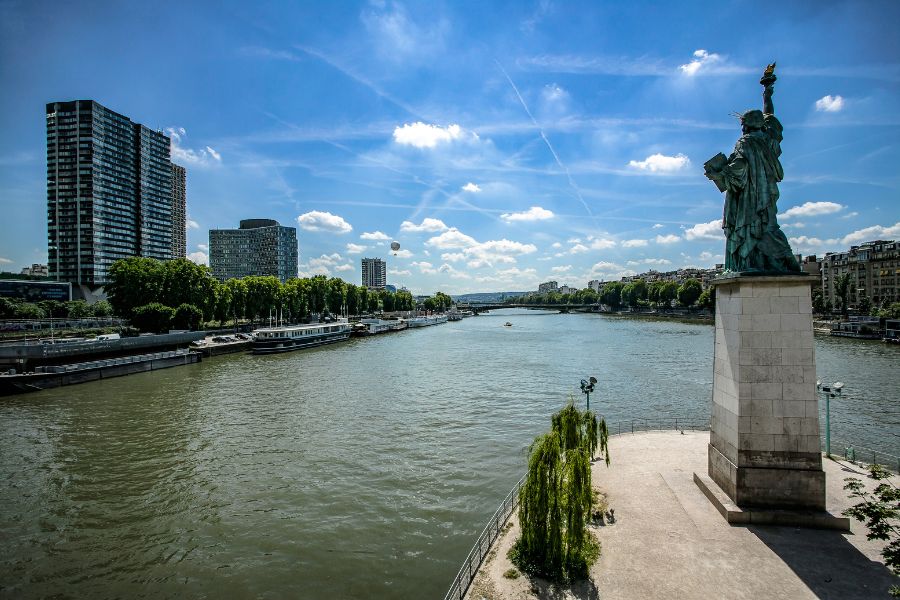
If you love art, hanging out with a sketchbook by the fountain feels like joining a centuries-old tradition.
Philosophical Winds: Freethinkers, Atheism, and Intellectual Legacy
As I wander Luxembourg Gardens, I almost sense the presence of great minds who once debated, scribbled, and dreamed among the chestnut trees and fountains.
The park isn’t just beautiful; it’s alive with Paris’s long tradition of questioning, conversation, and bold new ideas.
Denis Diderot and the Age of Ideas
Standing near the Medici Fountain, I can picture Denis Diderot deep in conversation with fellow thinkers.
Diderot, famous for co-editing the Encyclopédie, loved making complicated ideas clear.
He gathered with friends in Paris coffeehouses and parks, opening up philosophy and science for everyone.
Diderot’s boldness often upset the authorities. He pushed for knowledge, reason, and skepticism, arguing that people should question old beliefs.
He balanced curiosity and challenge in a way that still feels fresh. Walking these paths, I remember how Diderot’s work fueled an age when conversation itself could be revolutionary.
Atheism, Freethinkers, and Shaping Paris’s Identity
In Luxembourg Gardens, debates about belief and atheism have floated on the breeze for centuries.
Freethinkers found a home here, questioning both church and tradition.
Some, like Diderot, pushed against religious norms and embraced a humanistic outlook, helping shape Paris’s modern secular identity.
It’s not just the statues and fountains that matter. There’s a spirit of boldness in the air.
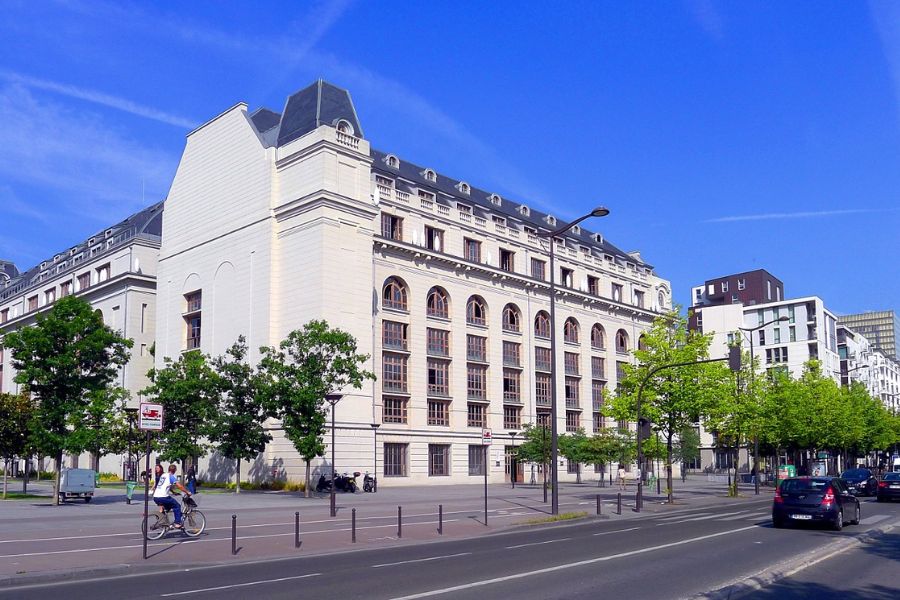
These thinkers welcomed competition of ideas and believed that questioning, not just accepting things, made character stronger.
When I explore the gardens today, I feel how their legacy still makes the Left Bank dynamic and open-minded.
Competition, Biography, and Lasting Impact
Paris’s freethinkers definitely didn’t have it easy. Diderot, for example, dealt with censorship head-on.
Biographies of Enlightenment figures often highlight the fierce competition for influence. Rivalries shaped their books, their friendships, and their public lives.
Sometimes these struggles played out in public, but other times they stayed hidden. These challenges forced them to sharpen their arguments and build stronger character.
You’d find more than just friendly chats in the Luxembourg Gardens. Heated debates and disagreements happened there, too.
These freethinkers really set the standard for independent thought. Even now, you can feel the echoes of their challenges, almost nudging you to look closer and ask your own questions while you wander through all that history and beauty.

